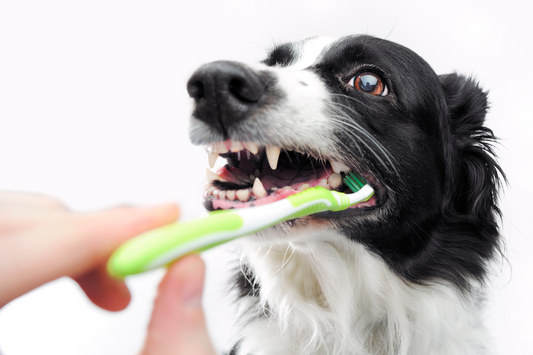Did you know that dogs aren’t exempt from allergies? Just like us humans, our dogs can be allergic - meaning their body’s immune system reacts poorly to foreign substances that normally wouldn’t be a problem for others. Dogs can have skin allergies, food allergies, and their body may also react poorly to environmental allergens. For this post though, we’ll be focusing on the second - food allergies.
Food allergies
Dog food allergies can be really concerning and scary for us dog owners. Symptoms usually manifest in dogs after prolonged periods of consumption of the food they’re allergic to. The most common things dogs may be allergic to or sensitive to are proteins, like dairy, beef, chicken, or soy. However, pretty much any food ingredient can produce an allergy
Allergy symptoms to food in dogs
Dog food allergy symptoms generally include itchy skin, ears, or ears. Their digestive system may also be disturbed, like vomiting or diarrhea. Subtle changes may also occur through their behavior. These include, but are not limited to weight loss, lack of energy, hyperactivity, or even aggression.
What to do
When we notice the symptoms above, it may be because our dog is allergic to the food we’re giving them! It’s best to consult with a veterinarian about this because the symptoms noted above could be caused by other health conditions, so we should rule those out first. To find out if our dog really is allergic to the food we’re giving them though, we can feed them hypoallergenic dog food for around eight to twelve weeks.
Hypoallergenic dog food
Hypoallergenic dog food is made from ingredients that are unlikely to cause allergic reactions in your dog. They’re usually made out of ingredients that aren’t in normal bags of dog food, like pollock or rice or other types of poultry, meat, and vegetables. Hypoallergenic dog food usually doesn’t contain chemicals, preservatives, or artificial coloring.
By feeding our dogs hypoallergenic dog food that do not contain any ingredients that they have eaten before for eight to twelve weeks instead of their normal one, we are performing what is called an elimination trial. If their allergy symptoms disappear while they’re on the hypoallergenic diet, there is a chance that they may be allergic to what we were originally giving them. To fully confirm this, reintroduce the dog’s old food - and if allergy symptoms return, then we can be sure that they are allergic to one of the ingredients in the old food we were giving them.
Key takeaway
As dog owners, it can be very concerning to see the negative changes in our dog as a result of their food allergies. By ensuring that we’re feeding them the diet that is right for them, with ingredients that they’re not allergic to, we are fulfilling one of our responsibilities as caring dog owners.




